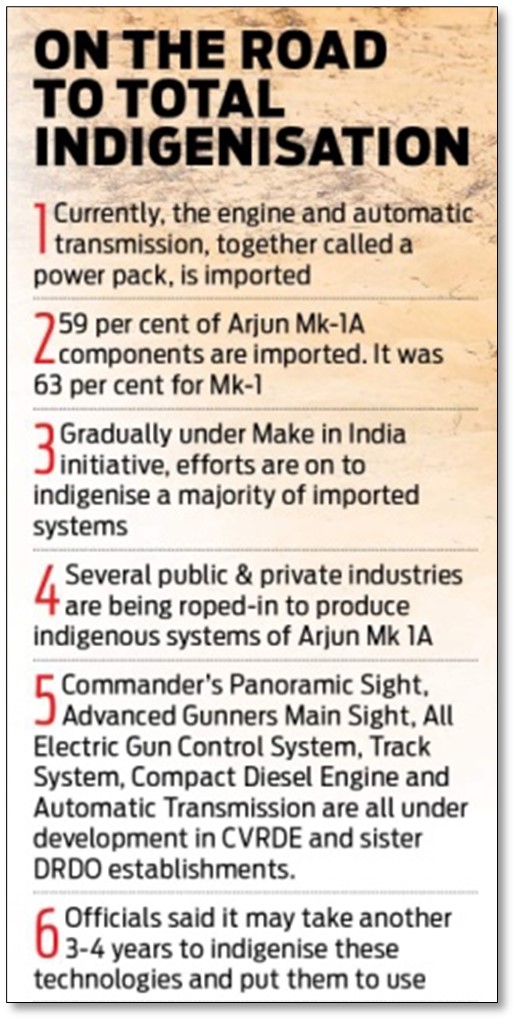Thursday, 30th September 2021
PM Poshan Shakti Nirman
In News
The mid-day meal scheme will now be known as PM Poshan Shakti Nirman
Details of the Scheme
- The change: The existing Mid-Day Meal scheme, which provides hot meals to students, will be renamed as the National Scheme for PM Poshan Shakti Nirman.
- Under the mid-day meal scheme, food is provided currently to students from Classes 1 to 8 — around 11.80 crore children in all, in 11.20 lakh government and government-aided schools.
- Under PM Poshan Shakti Nirman or PM POSHAN scheme, 24 lakh more children in pre-primary classes, currently covered under the ICDS, will also be brought in
- Time Period: PM POSHAN has been launched for an initial period of five years (2021-22 to 2025-26).
- Extension to Pre-Primary School Children: Students studying in pre-primary or Bal Vatikas of Government and Government-aided primary schools will be covered by the scheme from next year.
- Provision for Supplementary Nutrition: The new scheme has a provision for supplementary nutrition for children in aspirational districts and those with high prevalence of anaemia.
- Choice to the states: Earlier restrictions on the additional cost of the Centre to provide funds only for wheat, rice, pulses and vegetables has been lifted and provides choice to the states to add any component like milk or eggs to the menu.
- Nutri-Gardens: Nutri-gardens will be developed in schools which will provide firsthand experience with nature and gardening to children.
- Vocal for Local: Women self-help groups and farmer producer organizations will be encouraged to provide a fillip to locally grown traditional food items.
- Social audit: A social audit will be made mandatory in all the districts.
- Community Participation: Members of the community can provide voluntarily nutritious and healthy food to the children.
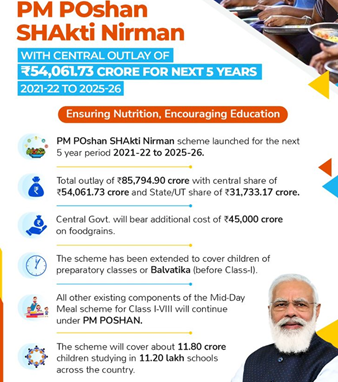
Significance
- Formalization of Pre School: Bringing preschool children under this scheme will help in formalization of the preschool as recommended by The National Education Policy (NEP).
- Enrolment of students: Will help in further increasing enrolment and preventing dropouts of the students like the Mid-day meal scheme.
- Transparency: The scheme nudges states to pay schools through the direct benefit transfer (DBT) mode which will help prevent leakages and bring more transparency.
Sources:
Dismantling of the Ordnance Factory Board
In News
The 220-year-old Ordnance Factory Board (OFB) will be dissolved on October 1, and its units will be corporatized under seven PSUs.
About the news
- OFB to be split into seven PSUs: PSUs will run clusters of ordnance factories involved in manufacturing similar categories of products.
- Munitions India Ltd, Armoured Vehicles Nigam Ltd, Advanced Weapons and Equipment India Ltd, Troop Comforts Ltd, Yantra India Ltd, India Optel Ltd, and Gliders India Ltd.
- Arguments in favour of Corporatization:
- Committees' recommendations: Three expert committees on defense reforms set up in the last two decades — the TKS Nair Committee (2000), Vijay Kelkar Committee (2005), and Vice Admiral Raman Puri Committee (2015) have recommended corporatization.
- Improved governance: It will lead to improvement in autonomy, accountability and efficiency in ordnance suppliers.
- Improved market competitiveness: Corporatization will bring these entities under the purview of The Companies Act, which would lead to improvements in efficiency, make products cost-competitive, and enhance their quality.
- Dismantling of monopoly: OFB’s monopoly has led to innovation drying up, apart from low productivity, high costs of production, and lack of flexibility at the higher managerial levels.
- Counter argument:
- Committee recommendation: A committee chaired by Lt. Gen D B Shekatkar, did not suggest corporatization, but recommended regular audits of all ordnance units considering past performance.
- Move towards privatization: Employees argued that corporatization was a “move towards privatization”.
- Job loss: Employees expressed fears of job losses, and said a corporate entity would not be able to survive the unique market environment of defence products with its unstable demand-supply dynamics.
- If it’s not broken do not fix it: The federations have insisted the factories have been innovative, and have repeatedly proven their worth as a “war reserve”. Many OFB products are exported.
- According to the federations, the recent order worth Rs 7,523 crore to Heavy Vehicles Factory (HVF), Chennai for 118 units of the Main Battle Tank Arjun’s Mark-1A variant for the Army, is testimony to the reliability of the ordnance factories.
About Ordnance factory
- Indian Ordnance Factories is a giant industrial setup which functions under the Department of Defence Production of the Ministry of Defence.
- Indian Ordnance Factories, headquartered at Kolkata, is a conglomerate of 41 Factories, 9 Training Institutes, 3 Regional Marketing Centres and 4 Regional Controller of Safety.
- Function:
- A large chunk of the weapons, ammunition, and supplies used by the armed forces, and paramilitary and police forces, come from OFB-run factories.
- Their products include civilian and military-grade arms and ammunition, explosives, propellants, and chemicals for missile systems, military vehicles, etc
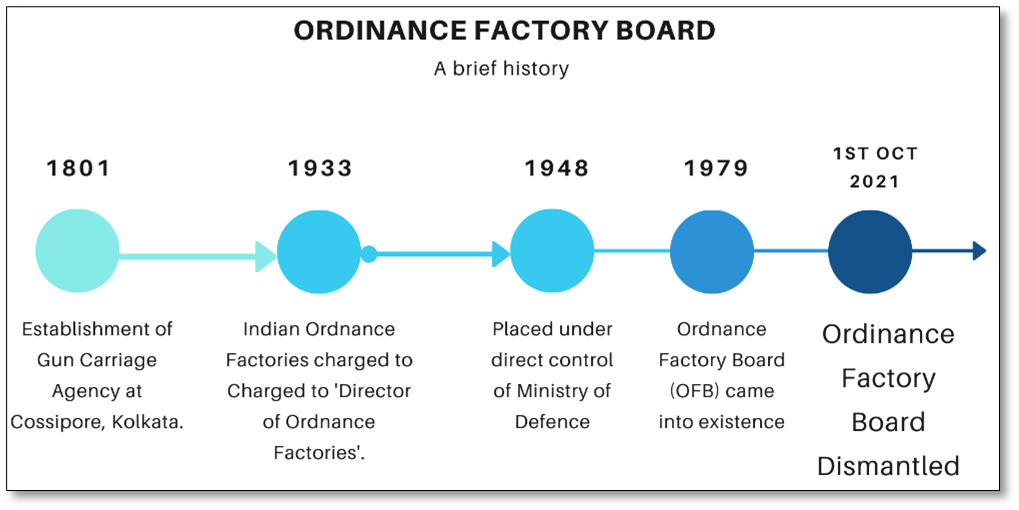
Sources:
The Burden of Climate Change on Children
In News
A new study has indicated that today's young generation will be much severely affected by climate extremes than the adults.
Findings of the Study
- Lifetime Exposure to Climate Extremes: The study estimates a lifetime exposure to six extreme weather events-wildfires, crop failures, droughts, river floods, heat waves and tropical cyclones-for every generation born between 1960 and 2020 under scenarios ranging from 5°C and 3.5°C of warming above pre-industrial levels.
- A child born in 2021, during his/her lifetime will experience on an average twice as many wildfires, between two and three times more droughts, almost three times more river floods and crop failures, and seven times more heatwaves compared to a 60 year old today.

- Adults to lead an “Unprecedented Life”: People under the age of 40 today will lead an unprecedented life with the predicted level of exposure to droughts, heatwaves, river floods and crop failures.
- Geographic Disparities: Younger generations from poor countries-particularly those in the Middle East and north Africa-will face greater exposure to extremes than those in richer ones.
- Insufficient Climate Policies: With the current insufficient climate policies, dangerous heatwaves that affect 15% of the global land area today could increase to 46%, hence triple by the end of the century.
- Drastic emission reduction-a possible option: Limit warming to 1.5 degrees Celsius which is the ambition of the Paris Climate Agreement by phasing out fossil fuel use would reduce the affected land area to 22%.
- More Climate protection and less Emission Reduction Pledges: Increased climate protection by getting in line with a 1.5-degree target, would reduce young people's potential exposure to extreme events by 24% globally.
Source:
- Explained: The burden of climate change on children born today
- Children born in 2021 to be twice as affected by climate change: Study
- Children born today are likely to face seven times more extreme weather events than their grandparents
- Children Born Today Will Suffer the Most as a Result of Climate Change
Intellectual Property Rights Regime in India
In News
The Department Related Parliamentary Standing Committee on Commerce has recently presented its 161th report, the Review of the Intellectual Property Rights Regime in India, to the Parliament.
About the News
- The report notes and compares the Indian system with other foreign jurisdictions. It also outlines the need for India to follow/consider/emulate the policies of the US or the EU.
- The report presents the importance and contribution of IPR to the economy and mentions how much is lost when inflexible IPRs affect access to healthcare.
- The report presents the gaps/issues in India’s IPR regime and hence has provided some recommendations to eliminate those issues.
What is IPR?
- Definition: As per the Paris Convention for the Protection of Industrial Property, the intellectual property represents patents, utility models, industrial designs, trademarks, service marks, trade names, copyrights, geographical indicators and confidential information. Intellectual Property Rights (IPR) are the rights given to persons over the creations of their minds and are critical in fostering innovation and creativity.
- Intellectual Property Legislations administered by DPIIT: The Patents Act, 1970; The Trade Marks Act, 1999; The Copyright Act, 1957; The Geographical Indications of Goods (Registration & Protection) Act, 1999; The Designs Act, 2000; and The Semiconductor Integrated Circuits Layout-Design Act, 2000.
Why do we need IPR Regime?
- Fostering Innovation: Safeguarding robust and an effective Intellectual Property Rights (IPR) regime is needed for the promotion, protection and management of creations and innovations in the form of intellectual property.
- Public and Private rights: India, being the largest democracy in the world, aspires to safeguard public interest in the face of industrial and technological growth. It is, therefore, imperative for India to maintain a fine balance between private rights through IPRs and rights of the society as public interest.
- Atmanirbhar Bharat: The strengthening of IPR regime has gained further significance in light of the Government's focus on 'Make in India' and 'Atmanirbhar Bharat' (a self-reliant India).
The gaps/issues in India’s IPR regime and recommendations to ameliorate the Issues
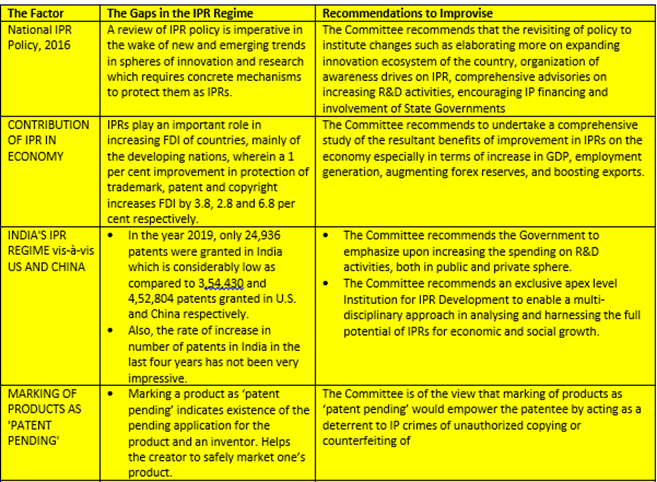
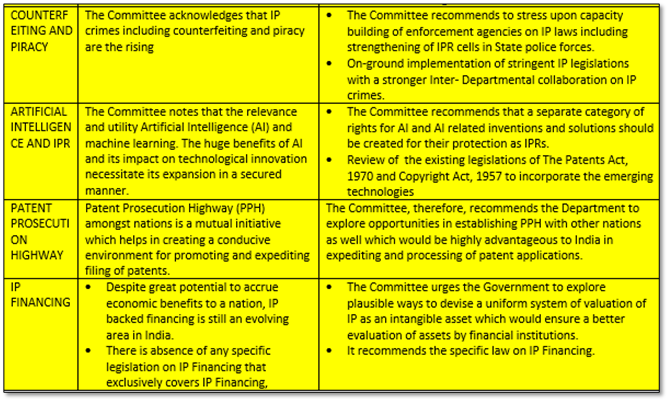
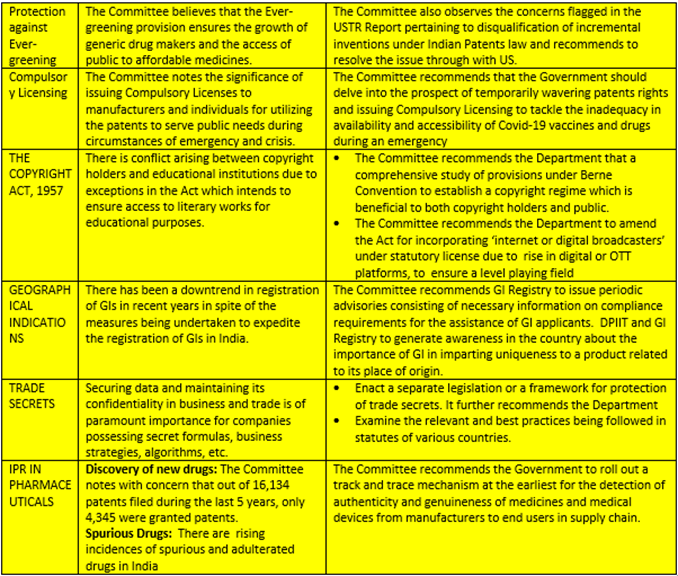
Conclusion:
A fair and equitable growth of IPRs in India needs improvisation and streamlining of legislative, administrative, adjudicative and enforcement mechanisms. Conformity of legal provisions to the changing dynamics of innovation, recruitment and appointment of adept officials, swift handling of IPR cases and an efficient judicial system are imperative to build a robust IPR regime in India. This should also be in compliance with International agreements, rules and norms as well as compatible with other nations and foreign entities.
Hence, consolidated efforts on the part of Government, industry, civil societies as well as educational and research institutions functioning at the level of schools, colleges and universities would be the cornerstone in evolving a robust IPR regime in India thereby having a desired impact on the development in social, cultural and economic fronts.
Question: Discuss the various gaps in the IPR regime of India. What can be the steps to ameliorate these gaps/issues?
Sources:
This Day in History - International Translation Day
On September 30, 420, St. Jerome, the Bible translator who is considered the patron saint of linguists, died near Bethlehem, Palestine. So, 30 September celebrates the feast of St. Jerome, the Bible translator, who is considered the patron saint of translators. International Translation Day is meant as an opportunity to pay tribute to the work of language professionals, which plays an important role in bringing nations together, facilitating dialogue, understanding and cooperation, contributing to development and strengthening world peace and security.

Source:
Image of the Day - Athirappilly Waterfall
This is image of Athirappilly waterfall, which has been rated top waterfalls in Kerala. It is situated in Thrissur district on Chalakudi River which originates from the Anamalai Hills. Athirappilly waterfalls nicknamed as “Niagara of India “stands tall at 82 feet which makes her the largest waterfall in Kerala. Athirappilly waterfall is a top favourite spot of filmmakers.
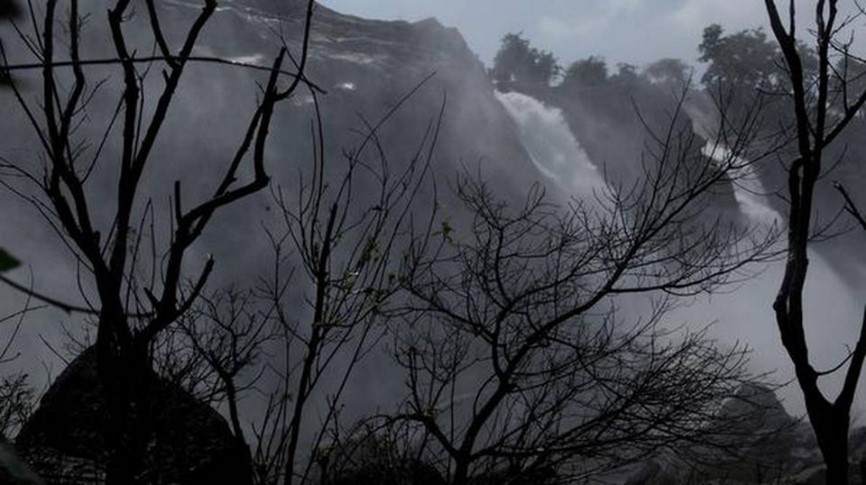
Sources:
Deshbhakti Curriculum
- Context: Delhi state has launched “Deshbhakti Curriculum” for school students.
- The Curriculum intends to bring the spirit of patriotism in each citizen to the fore, creating an environment for children where they feel a sense of patriotism 24x7.
- It will have no textbooks but will have facilitator's handbooks that are designed for three cohorts- nursery to class 5; classes 6-8 and classes 9-12 that will have simple activities, 100 stories of freedom fighters and patriots.
- The topics in the curriculum include:
- taking responsibility towards the country and its progress
- constructive criticism
- respect for and harmonious coexistence with others
- critically thinking about issues confronting the country etc.
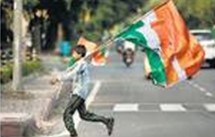
Sources:
- Arvind Kejriwal Launches "Deshbhakti Curriculum" For All Delhi Government Schools
- Kejriwal launches ambitious Deshbhakti Curriculum
Image Source:
“Blue Flag” Tag
- Context: Kovalam in Tamil Nadu and Eden in Puducherry have been awarded 'Blue Flag' certification recently.
- 'Blue Flag' certification is an international eco-level tag for sea beaches certified by Foundation for Environment Education in Denmark (FEE).
- The certification is accorded based on 100 percent compliance with 33 stringent criteria in four major heads which are:
- Environmental education and information
- Bathing water quality
- Environmental management and conservation
- Safety and services in the beaches.
- The Blue Flag label is accorded by the international jury composed of UNEP, United Nations World Tourism Organisation (UNWTO), Denmark-based NGO (FEE) and IUCN.
- With Kovalam and Eden, total number of Blue beaches in India has risen to 10, the other eight being Shivrajpur- Gujarat, Ghoghla-Diu, Kasarkod and Padubidri-Karnataka, Kappad-Kerala, Rushikonda- Andhra Pradesh, Golden-Odisha and Radhanagar- Andaman and Nicobar.
- India under its flagship programme Beach Environment and Aesthetics Management Services (BEAMS), aims to protect and conserve the pristine coastal and marine ecosystems.
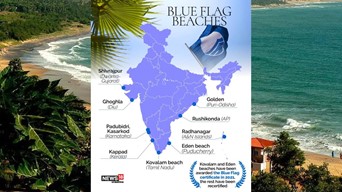
Sources:
- Two more beaches in India awarded prestigious ‘Blue Flag’ tag, details here
- Two more Indian beaches awarded coveted 'Blue Flag' tag
Image Source:
Decision Support System
- Context: Decision Support System (DSS) has been newly developed to determine the source of air pollutants in Delhi-NCR.
- The DSS is a pollution tracking model developed by the Indian Institute of Tropical Meteorology (IITM) which will be a part of the existing air quality forecasting system that has been operational in Delhi-NCR since 2018.
- Besides forecasting the air quality events, the DSS will provide insights on which regions could be responsible for the pollution, how much of the pollution comes from Delhi and how much from nearby areas.
- It provides real-time source apportionment information –emission contributions of different sectors within Delhi.
- Eight sectors have been factored into the system to check their contributions to emissions, namely, energy, residential, transport, waste burning, construction, road dust, industries (in Delhi and peripheral ones), and others.
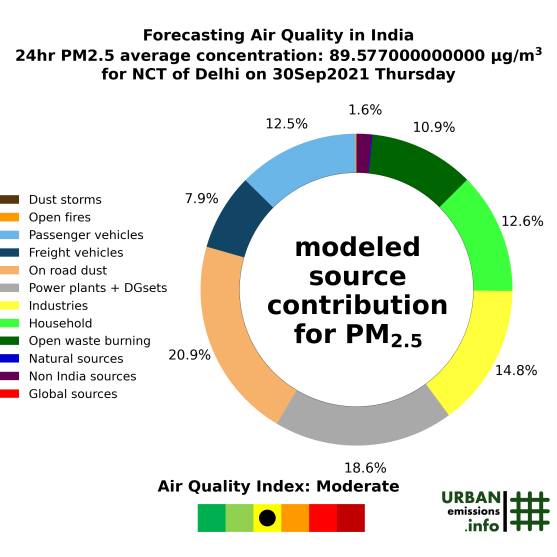
Sources:
- This year, new system to pinpoint sources of air pollution in Delhi-NCR
- System to give Delhi precise data on air pollution sources
Image Source:
RuPay On-the-Go
- Context: The National Payments Corporation of India (NPCI) in partnership with YES Bank has launched “RuPay On-the-Go”.
- RuPay On-the-Go is a contactless payments solution that will allow customers to make small and large value transactions instantaneously using daily wear accessories eliminating the need to carry a physical card.
- The RuPay On-the-Go smart accessories, such as keychains with tap-and-pay functionality, will enable customers to make digital payments securely, easily and in style.
- It is an interoperable, open-loop solution that customers can use at RuPay contactless-enabled PoS (Point of Sale) at retail outlets and pay up to Rs 5,000 without the need to input the PIN. For payments above Rs 5,000, customers need to tap, followed by their PIN.
- Customers can log on to BHIM YES PAY app, register themselves and apply for RuPay On-the-Go. Even consumers without an existing YES BANK account can avail these wearables.

Sources:
- NPCI, YES Bank launch RuPay On-the-Go
- NPCI partners Yes Bank to launch contactless solutions ‘RuPay On-the-Go’
Image Source:
What gives rise to the rural debt trap?- IE
Essence: According to the All-India Debt and Investment Surveys (AIDIS) of the National Statistical Office, the proportion of rural households having outstanding loans on June 30, 2019 is 35%. Inadequate access to affordable credit is the main reason for the rural distress as non-institutional agencies charge higher interest rates. Presently, the institutional credit is taken mainly for farm business and housing in rural India. Most of debt from non-institutional sources is used for other household expenditure. This causes increase in Debt-to-Asset Ratio (DAR), especially amongst the poor households. The need of the hour is to have a credit policy that caters to the consumption needs of the rural poor, find alternatives for collateral and to remove informational constraints to fight the rural debt trap.
Why you should read this article?
- To know about the findings of the All-India Debt and Investment Surveys (AIDIS)
- To understand the amount, sources of debt and comparison between the rural and urban debt.
- To understand the constraints to access formal credit and suggestions to remove these hurdles.
Source:
The IT Rules fail the the test of constitutionality- IE
Essence: The Information Technology (Intermediary Guidelines and Digital Media Ethics Code) Rules, 2021 were notified in feb, 2021, which aimed at providing one stop solution to all problems caused at social media, online news providers and over the top platforms. The government spoke of “a fine blend of liberal touch with gentle self-regulatory framework”, it is being found that such rules have undermined the right and freedom of internet users. Moreover, these rules do not have a statutory backing. Courts have been listening and sharing interim verdict, providing relief on IT rules which have been challenged at multiple levels. The central government has filed a transfer petition before Supreme court, possibly sending the digital content ecosystem into indeterminacy and regulatory stasis.
Why you should read this article?
- To understand the nuances of verdicts given relief to social media, digital content providers
- To gain an insight into fundamental violations of rights through the IT rules.
Source:
Overseas citizen with Indian people at heart
Background
- Poor students: aspiring to work in space arena remains an unfulfilled dream due to the financial constraints and technological issues in India.
- Priya Patel: an Aero space scientist of Indian origin, working with NASA and ESA of Indian Origin is working towards providing space technology exposure to less-privileged Indians.
About the efforts of Priya Patel
- Indian at heart: Born and brought up in Gujarat, India, she moved to UK and later became a space scientist.
- Providing resources: to young Indian students from low socio-economic strata to give them exposure to space facilities aboard.
- NGO: instituted an organization towards giving exposure to talented and passionate Indian school students to space agency facility abroad.
Lessons to learn
Empathy, Giving back to the society, Social service
Quote:
“The smallest act of kindness is worth more than the grandest intention.” – Oscar Wilde
Source:
Share the article
Get Latest Updates on Offers, Event dates, and free Mentorship sessions.

Get in touch with our Expert Academic Counsellors 👋
FAQs
UPSC Daily Current Affairs focuses on learning current events on a daily basis. An aspirant needs to study regular and updated information about current events, news, and relevant topics that are important for UPSC aspirants. It covers national and international affairs, government policies, socio-economic issues, science and technology advancements, and more.
UPSC Daily Current Affairs provides aspirants with a concise and comprehensive overview of the latest happenings and developments across various fields. It helps aspirants stay updated with current affairs and provides them with valuable insights and analysis, which are essential for answering questions in the UPSC examinations. It enhances their knowledge, analytical skills, and ability to connect current affairs with the UPSC syllabus.
UPSC Daily Current Affairs covers a wide range of topics, including politics, economics, science and technology, environment, social issues, governance, international relations, and more. It offers news summaries, in-depth analyses, editorials, opinion pieces, and relevant study materials. It also provides practice questions and quizzes to help aspirants test their understanding of current affairs.
Edukemy's UPSC Daily Current Affairs can be accessed through:
- UPSC Daily Current Affairs can be accessed through Current Affairs tab at the top of the Main Page of Edukemy.
- Edukemy Mobile app: The Daily Current Affairs can also be access through Edukemy Mobile App.
- Social media: Follow Edukemy’s official social media accounts or pages that provide UPSC Daily Current Affairs updates, including Facebook, Twitter, or Telegram channels.




